See project logs for details.
Tabletop Retropie Arcade
A tabletop arcade machine based off a Raspi Retropie
A tabletop arcade machine based off a Raspi Retropie
To make the experience fit your profile, pick a username and tell us what interests you.
We found and based on your interests.
See project logs for details.
arcade_dimensions.jpgJPEG Image - 211.91 kB - 02/14/2020 at 13:28 |
|
|
arcade_cabinet.skpSSEYO Koan Play File - 366.48 kB - 02/14/2020 at 13:28 |
|
|
arcade_dimensions.aipostscript - 72.28 kB - 02/14/2020 at 13:28 |
|
|
The next step was to insert the monitor.
I used 2 rips of plywood to secure the monitor into the routed channels that it sat in. Then, I proceeded to make all the connections (power supply, hdmi, 1/8" stereo jack, usb interface for controls, etc) into the Raspberry Pi.
I was then ready to power up the raspberry pi!
After completing the frame, I started with the LED light strip, which is located on the inside of the marquee receiver pieces. This is a short bit of a roll that I had left over from another project. It's a standard white LED strip (no color) and runs off of 24 volts.
I then removed the joystick/button face and drilled all the holes for the buttons and joystick. I used a template from https://slagcoin.com/joystick/layout.html, and simply printed it out to scale, marking the center of all button & joystick locations. I opted to put (3) buttons on the face, which serve as the Select, Command, and Start buttons, respectively.
I wasn't happy with the length of the joystick against the 3/4" plywood, so I used my router to create a depression in the backside as shown in the image below.
I don't believe it matters the orientation of the joystick, at least the one I used, as all the directions can be mapped within Retropie.
For the power on the arcade machine, I used a newly purchased power pack/splitter. I cut out an opening in the back of the machine and installed a gem box and a switch, cutting open the extension cord on the power splitter and wiring it into the switch.
For the LED power, I ordered a 24V, 1 Amp power supply on Amazon for $10.
I waited on the monitor install for ease of accessibility, as I could do all this work by reaching through the face of the machine. I installed a cheap class d amplifier that I had in the parts drawer, purchased on eBay a while back. It has a 1/8" stereo input, perfect for the raspberry pi.
The LEDs pulled about 300mA, and on the test bench, I didn't see the amplifier go over 200mA, so a 1 amp power supply was perfect. The amplifier had a wide Vin range of 5v to 27v, so it worked with the same supply. After hooking the speakers up, I installed the marquee.
After the whole upper part of the assembly was completed, I then installed the (2) notched side pieces for the monitor, and proceeded to mount the controls board and the front face.
I did have to install the t-moulding on the face of the control board prior to installation. I cut out a piece for the bottom, but opted to leave it out for accessibility.
After all the pieces were in place, I used the router with the t-moulding bit on the edges of the side pieces, and installed the t-moulding on the edges.
For the outside curved areas, I cut a triangle 'v' shape out of the back of the t-moulding to allow it to curve around without bunching up in the routered slot. For the inside curved edges, I cut 3 slits in the back of the t-moulding to allow the same curve.
After cutting all the inside pieces on the tablesaw, I laid out all the pieces and applied a couple coats of matte clear lacquer.
You'll notice the panel cut out for the speaker. For this I used a home built router guide that my router sits in, and did a couple back and forth passes with a 3/8" plunge router bit.
I used a Kreg Jig & screws to join the pieces together, starting with the back & top, then working my way around the front. The pieces had to be installed in a particular order, since I wouldn't have easy access to the inside after some of the pieces were installed.
The t-moulding (shown above from outerwater industries, and purchased on Amazon) had to be installed on some of the pieces (you can see it is on the top piece in the image below) becuase the router would not have access to the far edges of the panel after it was installed. Even though the width of the part that gets inserted into the edge is 3/32, the directions instructed to use a t-moulding router bit with a width of 1/16" to allow the barbs on the t-moulding to have something to grab on to. Since the playwood is ACTUALLY 23/32" the t-moulding extends past the edges by a negligible amount.
The face pieces that are to accept the monitor, and shown below, started as 3/4" poplar, to which I used a router table to channel out the pocket that will accept the monitor. Since these are a different species of wood, I painted them black.
I chose to install the speakers on the upper inside panel prior to the installation of the panel, as I knew my drill would have a tough time fitting in there afterwards. The speakers chosen are generic 4" sony speakers purchased on eBay a while back. I framed out the receiver edges for the marquee using 3/4" x 3/4" wood pieces. A bevel was cut into the top and bottom pieces to match the 22 degree angle of the top and inside top pieces. You can see the lacquer vs. no lacquer on the inside of the side pieces. This area will be visible after the build is complete because of the inset of the monitor pieces and joystick/button panel.
I've decided against painting the arcade, opting for an oak finish. To achieve this, I'll be using 3/4" oak veneer plywood. One 4' x 8' sheet should be enough for the entire build.
I mentioned in the previous post, that the marquee will dictate the size of the machine, so the inside was designed to be 2' 2" wide, to accomodate the 26" wide marquee.
Given this, I've determined that the maximum size monitor that would comfortably fit inside the machine is a 27" (diagonal) monitor, of which I quickly ordered.
I then designed the side panels, to protrude from all extended edges by 1/2", with a radius on all corners except the bottom, and a large radius between the front and the upper part of the monitor as shown.
Selecting the side panel geometry, then exporting to DXF. I opened the file in Illustrator and defined all the points for the edges and the radius center point.
The origin, 0,0, is the lower left corner, with the first number representing the X (left and right) dimension, followed by the second number representing the Y (top to bottom) dimension.
I then layed out all these points on a piece of scrap plywood, eventually to be used as a template for the actual side panels.
Using a skillsaw and jigsaw to cut the template out of scrap plywood, I then screwed the template to my sheet of 3/4" oak veneer plywood (on the inside so the screw holes would not be shown), and rough cut the shape of the side panels out of the veneer plywood. I cut the side panels rough, leaving about 1/8" from the edge of the template using a jigsaw.
I then followed up with a flush cut router bit, using the template as the guide for the bearing on the bit.
The final side pieces shown above, will eventually have t-moulding to conceal the rough plywood edges.
As with any good project, you need a good plan. My goto for quick planning, as with most, is sketchup.
T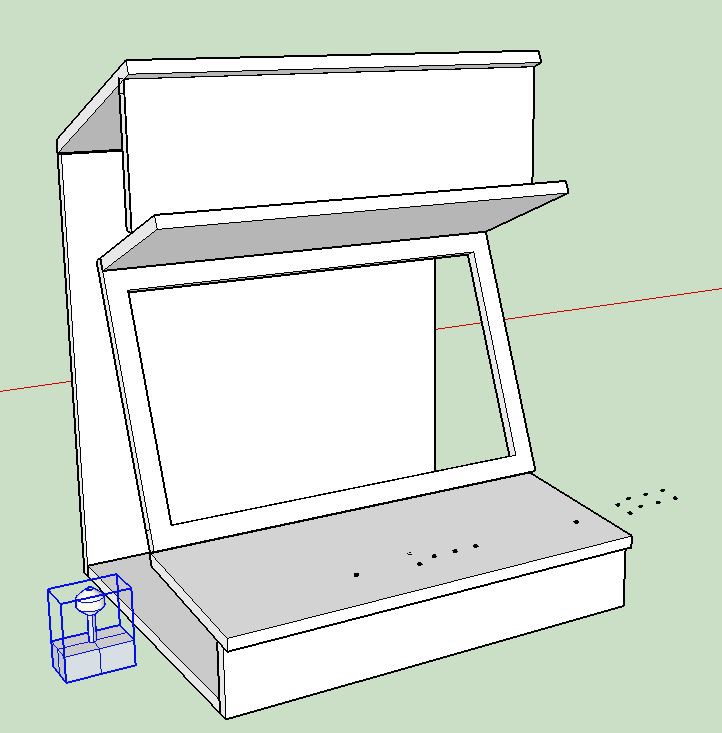 Early on in the design stage, it was the intent to have a 2 player arcade, but I opted for single player.
Early on in the design stage, it was the intent to have a 2 player arcade, but I opted for single player.
The size of the arcade is largely dictated by the the marquee I ordered. Surprisingly, there's a plethora of neat marquees on eBay. I ordered one that is 8" x 26"
The design above is 26" wide, which will have 2 end panels.
The lower piece on the marquee is shown long, but will be shortened, as its still in design.
Create an account to leave a comment. Already have an account? Log In.
Become a member to follow this project and never miss any updates
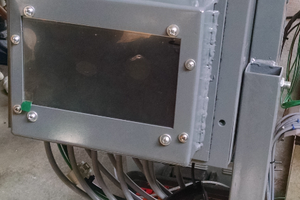
 willbaden
willbaden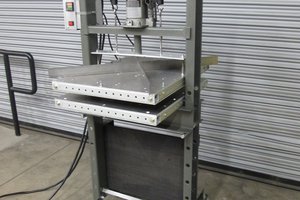
 Supplyframe DesignLab
Supplyframe DesignLab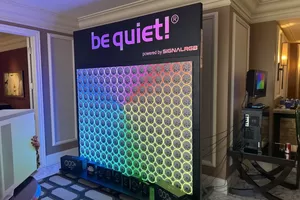
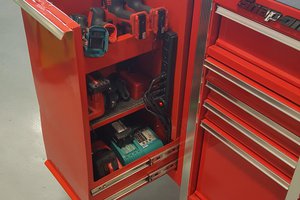
 BreeStephany
BreeStephany